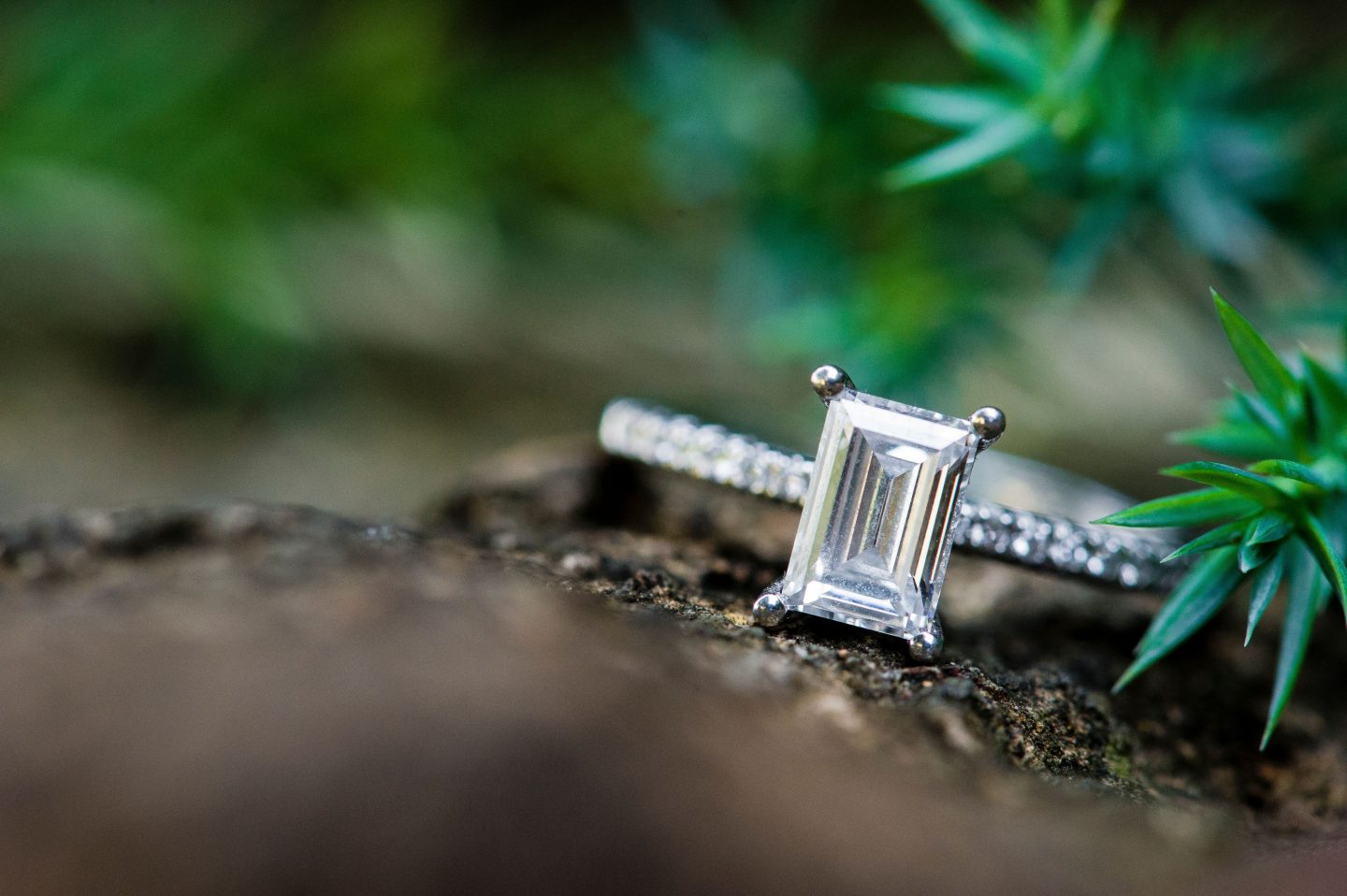
Emerald cut diamonds are known for their elegance, sophistication, and understated beauty. Characterized by their rectangular shape with truncated corners and step-cut facets, these diamonds reflect light in a way that highlights their clarity rather than brilliance. The emerald cut has a rich history and has adorned some of the world’s most famous diamonds, making it a timeless choice for those who appreciate classic style.
The Origins of the Emerald Cut
The emerald cut was originally developed for emeralds, hence its name. Emeralds, being softer and more brittle than diamonds, required a cut that would minimize pressure during the cutting process. The step-cut design, with its large, open table and fewer facets, was perfect for this purpose, as it reduced the chances of chipping and allowed the natural beauty of the emerald to shine through.
During the Art Deco period of the 1920s and 1930s, the emerald cut gained popularity for diamonds. The clean lines and geometric form of the cut resonated with the design aesthetic of the time, which favored symmetry, sleekness, and elegance. As a result, the emerald cut became a popular choice for engagement rings and other fine jewelry.
The Unique Appeal of Emerald Cut Diamonds
Unlike the brilliant cuts that emphasize sparkle through numerous facets, the emerald cut is designed to showcase a diamond’s clarity. The parallel facets create a “hall of mirrors” effect, offering flashes of light and dark that draw the eye into the stone. This effect, combined with the elongated shape, gives the emerald cut diamond a sophisticated and vintage appeal.
However, this cut is not for every diamond. Due to the large table and the fewer facets, inclusions and color tints are more easily visible in emerald cut diamonds than in their brilliant-cut counterparts. As a result, higher clarity and color grades are often recommended for this shape to ensure the stone’s beauty is maximized.
Famous Emerald Cut Diamonds
Throughout history, several emerald cut diamonds have become famous for their size, beauty, and the notable figures who have worn them. Here are a few of the most renowned:
- The Rockefeller Diamond: Weighing 40.22 carats, this stunning emerald cut diamond was owned by the Rockefeller family. It was originally purchased by John D. Rockefeller in 1934 as a gift for his wife, Abby Aldrich Rockefeller. The diamond has since passed through the hands of various collectors and remains one of the most famous emerald cut diamonds in the world.
- The Krupp Diamond (Elizabeth Taylor Diamond): Perhaps one of the most famous emerald cut diamonds due to its association with Hollywood royalty, the Krupp Diamond is a 33.19-carat gem. It was given to Elizabeth Taylor by her husband, Richard Burton, in 1968. The diamond was later renamed the Elizabeth Taylor Diamond, and it remains a symbol of glamour and romance.
- The Lesotho III: Originally part of a larger 601-carat rough diamond discovered in Lesotho in 1967, the Lesotho III is a 40.42-carat emerald cut diamond. It was given to Jacqueline Kennedy Onassis by Aristotle Onassis and is another example of the cut’s association with iconic figures.
- The Asscher-Cut Cullinan I: While not a pure emerald cut, the Asscher cut, which is closely related, shares many characteristics. The Cullinan I, also known as the Great Star of Africa, is the largest clear-cut diamond in the world at 530.2 carats. It is part of the British Crown Jewels and is set in the Sovereign’s Sceptre.
The Enduring Legacy of Emerald Cut Diamonds
Today, the emerald cut remains a popular choice for those seeking a diamond that exudes grace and refinement. Celebrities, royalty, and discerning individuals continue to favor this cut for its timeless appeal. Whether in engagement rings, earrings, or pendants, emerald cut diamonds offer a unique combination of vintage charm and modern elegance.
For those considering an emerald cut diamond, the key is to prioritize clarity and color to ensure the stone’s true beauty shines through. When done right, an emerald cut diamond is not just a piece of jewelry—it’s a statement of style, history, and timeless sophistication.

